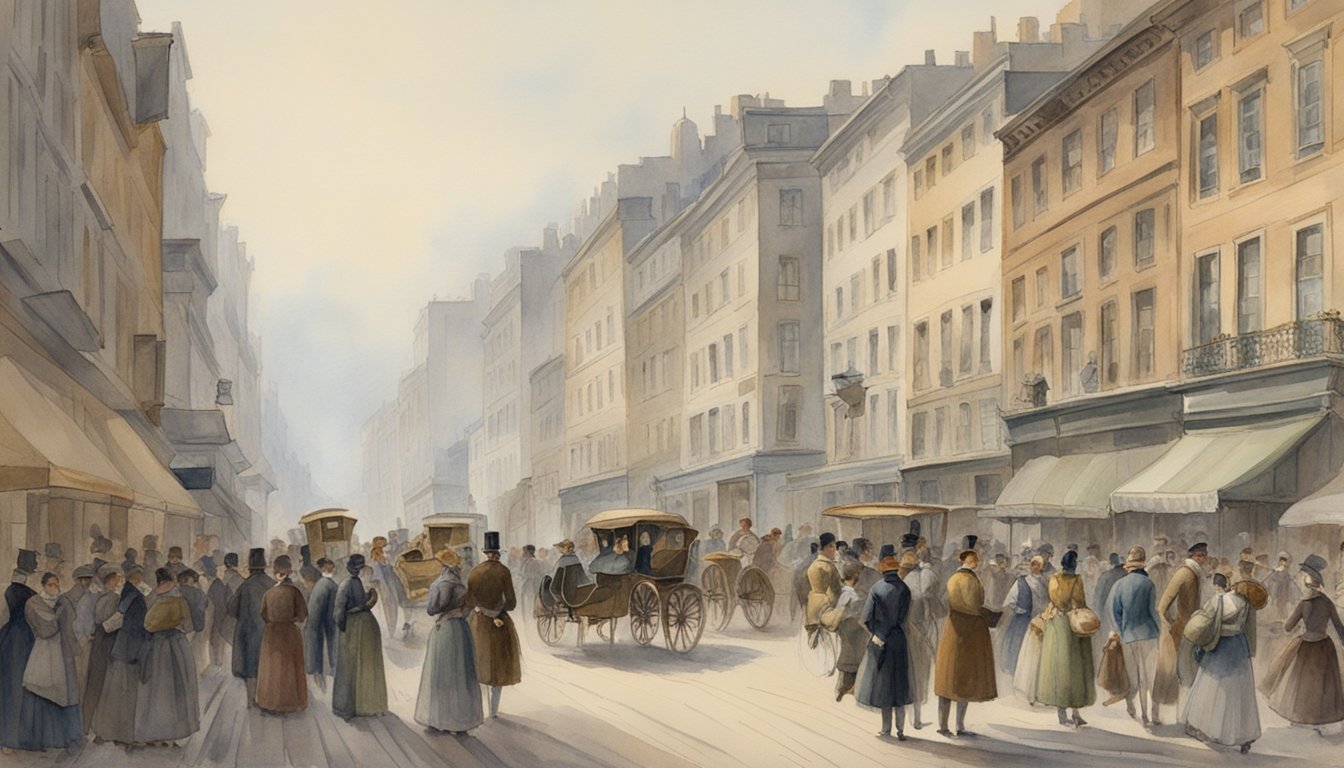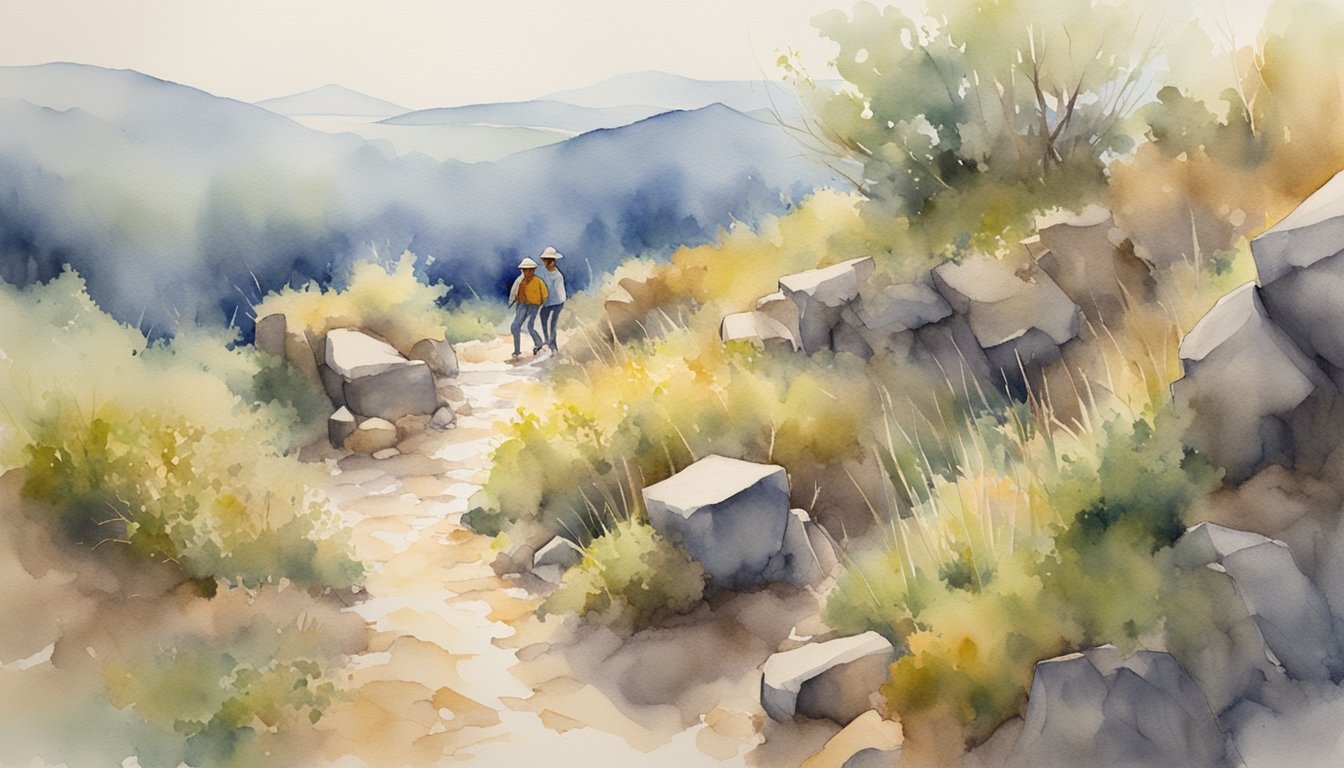Pedestrianism, a popular 19th-century sport, captivated audiences with its dramatic long-distance walking challenges.
Unlike modern competitions, early pedestrianism faced many obstacles, including skepticism and logistical issues. George Wilson, one of many 19th-century pedestrians, attempted the notable feat of walking 1,000 miles in 1,000 hours.
This not only tested physical endurance but also highlighted the sport’s growing appeal and the public’s fascination with endurance sports.

Prominent figures like Captain Robert Barclay Allardice became legendary for their walking feats.
Allardice famously walked one mile every hour for 1,000 hours, attracting thousands of spectators daily.
Pedestrianism’s popularity grew rapidly, competing with other sports like horse racing.
Entrepreneurs saw opportunities, offering sizable prize money for competitions, which sometimes drew crowds of up to forty thousand people.
The evolution of pedestrianism marked an important period in sports history.
Though eventually overshadowed by cycling and other evolving sports, pedestrianism laid the groundwork for modern athletic challenges.
The cultural impact of pedestrianism during its peak years remains significant, as it demonstrated early public enthusiasm for endurance challenges and competitive sports.
Key Takeaways
- Pedestrianism was a popular 19th-century sport focused on long-distance walking.
- Key figures like George Wilson and Captain Robert Barclay Allardice gained fame through exceptional feats.
- Pedestrianism’s cultural impact paved the way for future endurance sports.
Emergence and Popularity in the 19th Century

Pedestrianism gained prominence in the 19th century with charismatic leaders and high-profile events drawing massive crowds and media attention.
Influence of Prominent Figures
Individuals like Edward Payson Weston played pivotal roles in popularizing pedestrianism.
After the Civil War, Weston’s remarkable walks captivated the public.
For instance, his 1867 New York to San Francisco trek earned him national fame.
In Britain, Sir John Astley organized highly publicized competitions, boosting the sport’s visibility.
These events often drew tens of thousands of spectators, illustrating the sport’s widespread appeal.
Notable pedestrians like Captain Barclay further added to the allure, with feats such as walking 1,000 miles in 1,000 hours.
These personalities were instrumental in transforming pedestrianism into a spectator sport, captivating audiences across both America and Britain.
The Role of Media and Public Events
The rise of media in the 19th century significantly boosted pedestrianism’s popularity.
Newspapers like the New York Herald extensively covered pedestrian events, drawing public interest.
Headlines featured detailed reports of races and rivalries, feeding a growing fan base.
Public events were also crucial.
Large-scale pedestrian contests often took place in arenas, attracting thousands of spectators.
Six-day walking races, where competitors aimed to cover the most distance, were particularly popular.
These marathon events offered substantial prize money, spurring fierce competition.
In England, events hosted by figures like Sir John Astley turned pedestrianism into a national affair.
The combination of intense media coverage and thrilling public competitions solidified pedestrianism as a favorite pastime in both America and Britain.
Evolution of Competitive Walking

Competitive walking evolved significantly from its early days, shaping the modern sport it is today.
This journey involves the formalization of racewalking and many historic races achieving early fanfare.
Development of Racewalking
Racewalking emerged as a formal sport from the broader category of pedestrianism.
Originally, pedestrianism included various walking and running events.
Over time, racewalking developed distinct rules.
By the late 19th century, precise rules were established, distinguishing it from running.
Athletes had to maintain contact with the ground, ensuring one foot remained on the ground at all times.
These rules aimed to standardize the competition and improve fairness.
The establishment of these guidelines allowed racewalking to thrive.
This standardization helped athletes train more effectively for endurance challenges.
It also made it easier for officials to judge the events accurately.
Comprehensive rules contributed to the evolution of racewalking into an organized sport.
Notable Races and Achievements
Historic races played a key role in popularizing competitive walking.
One famous event was the six-day walking matches.
These matches attracted large crowds, often held in major venues like Madison Square Garden.
These events tested the endurance of participants, making them exciting for spectators.
Notable athletes like Charles Rowell set impressive records, gaining fame and pushing the sport forward.
These races were not just about speed but also about sustaining effort over multiple days.
Multi-day races contributed to competitive walking’s credibility as a sport.
Achievements in these races laid the groundwork for modern racewalking.
The evolution from pedestrianism to structured events showed how competitive walking could capture public interest and grow as a respected athletic endeavor.
Cultural Impact and Historical Significance

In the 19th century, pedestrianism had a significant cultural impact.
It was a prominent form of entertainment and competition that fostered social change and legacy.
Economic and Social Factors
Pedestrianism attracted large crowds, making it a lucrative business in the United States and Europe.
Public events drew audiences, which increased ticket sales and stimulated local economies.
Celebrity athletes like Ada Anderson and Frank Hart became famous, much like today’s sports stars.
Bets and corporate sponsorship played a crucial role in the sport.
Wagering on matches was common, fueling the gambling industry.
To enhance performance, athletes often used stimulants, such as champagne and coca leaves, and trainers were ever-present.
The promotion of these events also included trading cards and other memorabilia, adding to their social and economic influence.
Legacy and Decline
Despite its earlier prominence, pedestrianism gradually declined due to various factors.
The rise of new sports and entertainment forms overshadowed the long-distance walking competitions.
In Canada and Australia, pedestrianism once thrived, but interest waned over time.
New forms of spectator sports captured public attention, leading to a steady drop in pedestrianism events.
However, the legacy of athletes like Ada Anderson, who broke records and dazzled spectators, remains in history.
The eventual decline did not erase the impact pedestrianism had on modern competitive sports.
It set the stage for structured competitions and celebrity athletes, influencing how sports are viewed today.
For more insights, explore the decline of pedestrianism.


